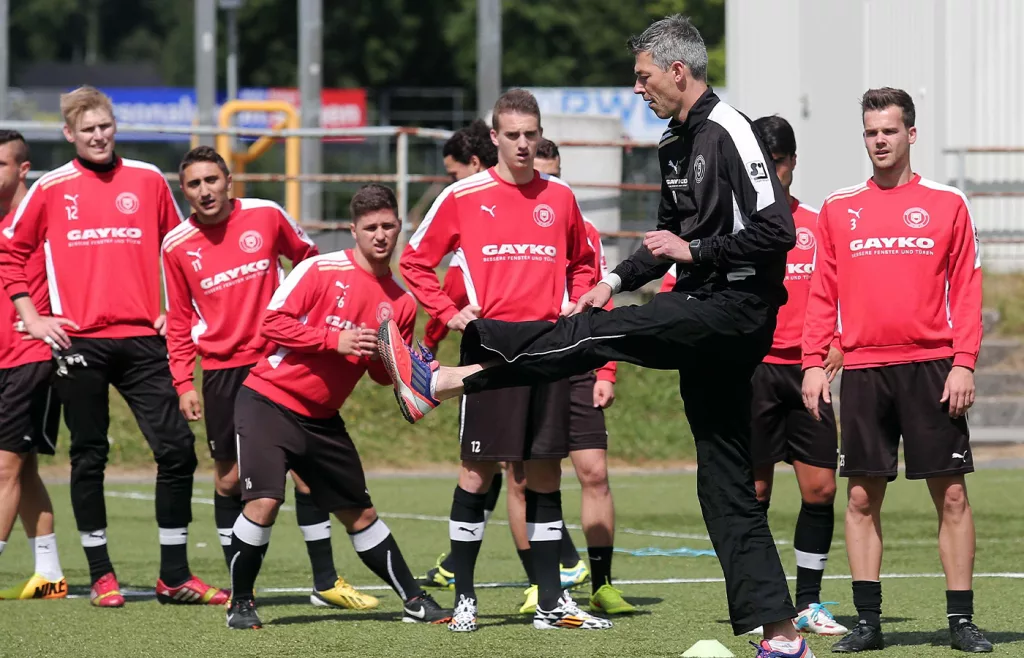In this insightful interview, we sit down with Carsten Effertz, renowned speed coach from the Tanner Speed Academy, to delve into the intricacies of speed training in soccer. Carsten, sheds light on the critical role of speed in today’s soccer, and the common myths surrounding it.
He also discusses the key components of effective speed training, the impact of genetics, and the evolution of speed in the sport over the years. Join us as we explore these fascinating aspects with one of the leading figures in soccer speed coaching.

SC: How does one become a speed coach?
CE: There is not really an education like there is for example for a soccer coach. You cannot make a UEFA or FIFA license to be a speed coach. In my case it is a lot about having experience gained over many years of training. Hans Tanner, the founder of Tanner Speed, for example was the national coach for the Swiss high jumpers before he started working as a speed coach for the FC Zurich soccer academy. In my case, I played football on academy level and at the same time I was a high jumper at teenage age. From there the passion for this kind of training developed.
…if you’re 0.1 seconds faster than your opponent in a 10-meter sprint, you’ll be about 58 centimeters ahead. This can be the difference between taking a shot on goal or making a successful tackle.
Carsten Effertz
SC: Why is speed training so important for soccer players?
CE: Everything soccer players have to do in today’s game has to be fast. Every movement is under time pressure. It is not only running and moving fast. It is also the ability to think and take the right decisions fast. This is something we can train with specific training sessions to be prepared in the game. A simple example, if you’re 0.1 seconds faster than your opponent in a 10-meter sprint, you’ll be about 58 centimeters ahead. This can be the difference between taking a shot on goal or making a successful tackle.
SC: What are common misconceptions about speed training in soccer?
CE: A common misconception is that you are either fast or not. But running is a skill. Like passing the ball is a skill. Not everyone is able to run as fast as Mbappe. But with a better running and moving technique you can use your full personal potential. And that is the key.
SC: What are the key components of speed training for soccer players?
CE: Frequency (or cadence) and reactive strength. And for this we need a good coordination. We have to make a good use of what we call muscle-tendon elasticity. And this is only possible if our muscular system is prepared to activate as fast as possible.
SC: Meaning for a soccer player, high frequency movements are better?
CE: Yes, a simple example would be Usain Bolt. If you remember, Usain Bolt tried to become a soccer player but he did not make it to the highest level. One of the reasons was that he was too slow. I know it seems a little counterintuitive to say that the fastest man on earth was too slow for soccer, but a 100-meter runner uses entirely different steps than a soccer player. In soccer, we have quick changes of direction with short sprints, while a 100-meter runner covers a great distance with only a few steps. That is why it is so important to train for frequency.
…running is a skill. Like passing the ball is a skill. Not everyone is able to run as fast as Mbappe. But with a better running and moving technique you can use your full personal potential.
Carsten Effertz
SC: Do genetics play a big part or am I actually able to become faster?
CE: As mentioned above it is one important part but not only. If you have good genetics in terms of fast muscles it will help you only with a good coordination and running technique. Otherwise there is a high risk of injuries because your body is not prepared for withholding the stress of the speed.
SC: Speaking of key components, what are typical mistakes you see all the time when training with players?
CE: The key problem for players is that they are landing on the heels. When you look at all the top players like Mbappe or Vinicius Jr. you will notice that they are not touching the ground with the heels. Only when you are landing on the front part of your foot you can develop the power to push your body forward.
SC: How do you measure progress in an athlete’s speed and speed endurance?
CE: In our academy, we measure the progress of our athletes using several tests, ranging from linear sprinting to change of direction tests. With our Speed Court system, we can measure the players’ agility, assessing how quickly they react to a signal. These tests provide us with information that we use to develop individual programs for the athletes. This process is followed by regular testing periods to determine if the training program they are following is yielding the desired results.
SC: How has speed in soccer evolved over the years?
CE: The speed in soccer has significantly increased over the past few years. The higher the level, the faster the game becomes. Observing the Premier League or the FIFA World Cup, for instance, statistics show that players are spending more time running at higher speeds. Take a player like Bellingham, for example, who executed up to 87 sprints in a single game. This essentially means he is performing a full-speed sprint nearly every minute.
SC: What advice would you give to young soccer players aspiring to improve their speed and athleticism?
CE: My best advice is that as a young player you rather focus on coordination than strength. When you develop a good coordination you will be able to move quicker. And then we have to develop the strength in our feet. For this it is helpful to do training sometimes without shoes. When doing coordination and speed training you can develop the muscles in your feet even better when doing it without shoes.
More Info about Tanner Speed
If you want to know more about speed and athletic training in soccer we recommend the following links

